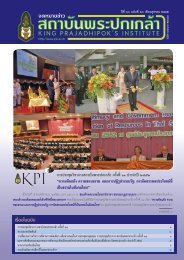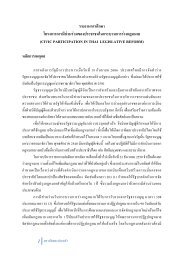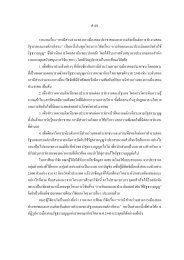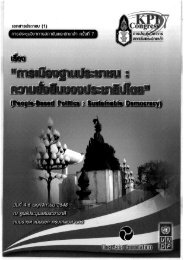SUFFiciENcy EcONOMy ANd GRASSROOtS DEvElOPMENt
SUFFiciENcy EcONOMy ANd GRASSROOtS DEvElOPMENt
SUFFiciENcy EcONOMy ANd GRASSROOtS DEvElOPMENt
You also want an ePaper? Increase the reach of your titles
YUMPU automatically turns print PDFs into web optimized ePapers that Google loves.
260<br />
The Meaning of Sufficiency Economy <br />
International Conference<br />
3. Analysis & Results<br />
India consumed a total of 158 MToe of biomass in 2005, most of it by rural<br />
households. At least, three quarters of rural households (668 million people) use<br />
traditional biomass fuels, wood, animal dung or agricultural residues, for cooking<br />
and heating. In the reference scenario, biomass use is projected to grow, but more<br />
slowly than the past. It reaches 171 Mtoe in 2015 and 195 Mtoe in 2030. (this is<br />
producing pollution.) (PCRA 2009) Accordingly, un-utilized potential for biomass<br />
power generation is 4 GW. Hence, there is a lot of unutilized potential for harnessing<br />
biomass energy.<br />
The southern and western coastal areas of India are the ideal location for wind<br />
generators (DOT 2008). It can be implemented in rural areas in states like Tamil<br />
Nadu, Karnataka, Gujarat, Maharashtra, and Andhra Pradesh, where the annual<br />
average wind speed of 5-6 m/s is available, installation of hybrid solar-wind power<br />
system can be an attractive option to supplement the energy supply. <br />
Hence, for the proposed hybrid model, these analyses are best valid for the<br />
regions of Tamil Nadu, Rajasthan, Karnataka, Andhra Pradesh, and Gujarat as these<br />
are best regions according to the Wind Map of India (DOT 2008). The solar<br />
insolation map of India is also given below for reference in the above areas.














